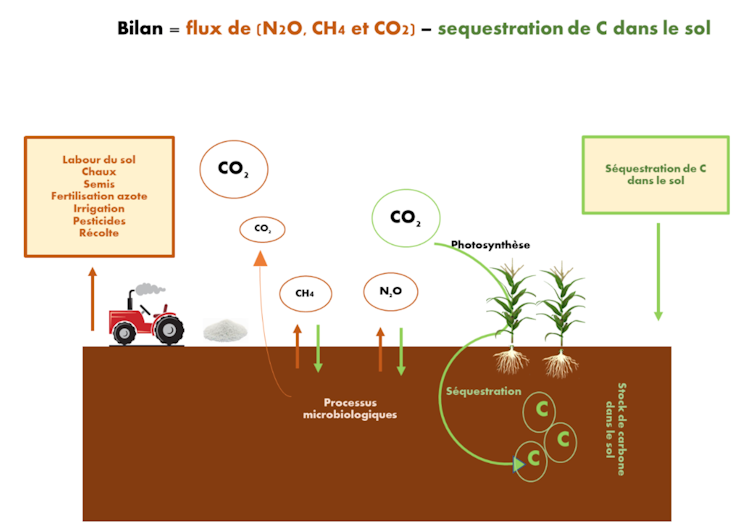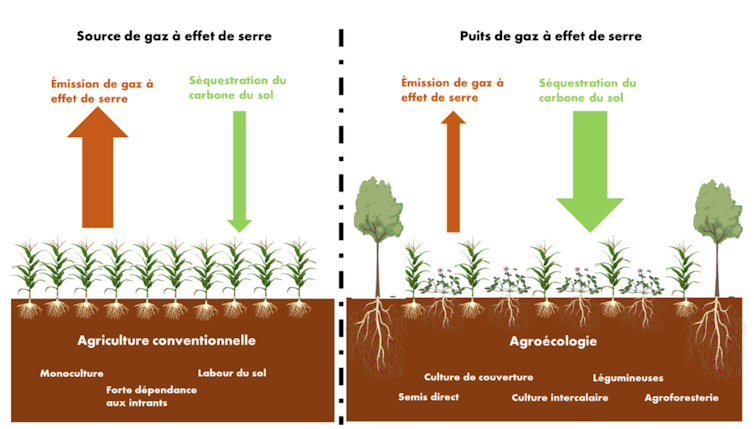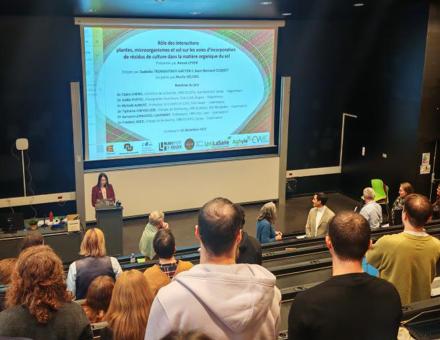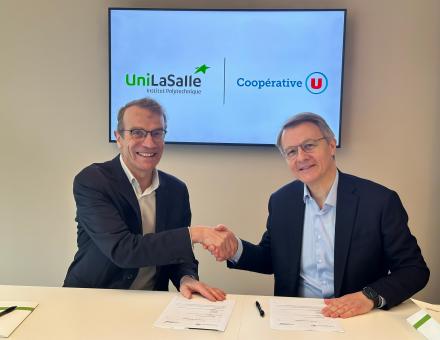Agriculture and land use change contribute 24% of greenhouse gas emissions. Researchers estimate that this share will increase by 30 to 40% by 2050. The challenge is therefore to counterbalance this with greater carbon sequestration in order to transform agrosystems into greenhouse gas sinks.
To determine this role, it is sufficient, in broad terms, to take into account the gases drawn from the agrosystem and to compare them to those emitted by the same agrosystem. To do this, it is necessary to measure the accumulation of carbon in the soil, the quantities of methane (CH4) and nitrous oxide (N2O) released into the atmosphere, as well as all the CO2 coming from agricultural practices: plowing, planting, harvesting, installation and use of irrigation, application of agrochemicals, fertilizers and lime.
Knowing that CH4 and N2O are greenhouse gases 34 and 298 times more potent than CO₂ respectively, it is sufficient to convert all these emissions into CO2 equivalent to estimate the net global warming potential and compare between different agricultural management methods.
To calculate the carbon cost of today's dominant agricultural practices, one must also consider their direct CO2 emissions. According to studies conducted in southern Brazil and the United States, the carbon cost of agricultural practices represents a significant amount of CO2, up to 800 and 2,000 kg ha-1 year-1.
Diagram showing how to estimate whether an agrosystem is a source or sink of greenhouse gases: measure carbon fixation in the soil, the amount of CH₄ and N₂O released into the atmosphere, and all the CO₂ from agricultural practices: tilling, planting, harvesting, irrigation installation and use, and application of agrochemicals, fertilizers, and lime.
Reducing inputs
Based on this observation, the first thing to do is to determine which agricultural practices to adopt in order to transform the soil into a greenhouse gas sink - and not a source.
The first element to take into account is that the soil can become a source of greenhouse gases when there is an excessive input, because telluric microorganisms feed on all these inputs and spit them out in the form of GHG.
Even more so when the land is saturated with water by irrigation and compacted by machinery, as oxygen availability becomes scarce, leading to methanization (a process responsible for the production of CH₄) and denitrification (one of the processes responsible for the production of N₂O). Nevertheless, these methane fluxes remain low or even sometimes negative if the soils have a good structure and are not flooded.
In addition, the establishment and use of irrigation accounts for 47-63% of the carbon footprint while fertilization and limestone application rise to 35%. These proportions vary according to the inputs used and their annual input. To mitigate the climate change caused by agriculture, the most obvious solution seems to be the reduction of inputs, with more reasoned spreading.
Agroforestry and legumes
Other agricultural practices are just as important in moving from a source to a sink for greenhouse gases.
This is particularly true of agroforestry, which has been adopted by some farms. It consists of using cover crops, for which carbon storage exceeds its CO₂ equivalent released into the atmosphere in terms of N2O emissions, and improves soil structure with negative CH4 emissions.
Two contrasting agricultural systems, behaving as source (left) and sink (right) of greenhouse gases, according to CO₂, CH₄ and N₂O emissions as well as soil carbon sequestration. Murilo Veloso
This is also the case for the use of legumes. As these plants associate with nitrogen-fixing bacteria, they promote carbon storage in the soil and make it possible to substitute part of the mineral fertilization, thus reducing nitrous oxide emissions.
On a corn plantation, for example, producing legumes as a cover crop in winter can cut N₂O emissions by a factor of three and increase carbon storage more than mineral fertilization.
Furthermore, by maintaining soil moisture and structure, practices such as agroforestry and cover crops provide an alternative to decrease irrigation.
Abandoning tillage
However, transforming an agrosystem into a greenhouse gas sink is not always obvious. For example, plowing, the practice of turning over the soil before seeding, does not necessarily have the same impact on GHGs.
In temperate environments, plowing has little effect on soil carbon stocks because low temperatures in early spring slow down microbial activity and the decomposition of soil organic matter.
In contrast, in tropical environments where temperatures remain favorable, soil destructuring by tillage stimulates microorganisms to decompose soil organic matter, which releases GHGs.
Example of conventional agriculture and its practices such as monoculture, tillage and heavy reliance on inputs that contribute to increased greenhouse gas emissions and reduced soil carbon sequestration, making the agricultural system a source of greenhouse gases (left). Example of agroecological practices such as cover crops, no-till, intercropping, legumes and agroforestry that contribute to decrease greenhouse gas emissions and increase soil carbon sequestration, making the agricultural system a greenhouse gas sink (right).
Murilo Veloso
For no-till farming practices, N2O emissions are largely offset by CO2 storage, counterbalancing the 375 to 616 kg of carbon equivalent emitted per hectare per year by the 2063 to 3940 kg of carbon equivalent fixed in the soil per hectare per year. This represents nothing less than a carbon storage five to six times higher than the emissions! Ploughing, on the other hand, clearly reduces the soil's capacity to draw carbon from these tropical zones.
On the other hand, plowing also constitutes an additional cost of CO₂ when the use of diesel for machinery is taken into account (35.3 kg of carbon equivalent per hectare per year in conventional and 5.8 kg in direct seeding).
From field to plate
Let's not forget that greenhouse gas emissions do not stop at production, but also continue during transportation, processing, packaging and redistribution of products.
It is therefore necessary to radically change agricultural practices, starting with the fields. The practices mentioned above - the use of cover crops, legumes, intercrops, agroforestry, and the abandonment of tilling the soil - would have a triple effect: strengthening an organic and sustainable agri-food system, respecting biodiversity, allowing a balanced cohabitation between agriculture and the environment, while making farmers less dependent on large industrial companies
Murilo Veloso, Associate Professor in Soil Science, AGHYLE Unit, Rouen Campus, UniLaSalle and Coline Deveautour, Associate Professor in Soil Microbial Ecology, UniLaSalle
This article is republished from The Conversation under a Creative Commons license. Read the original article.









